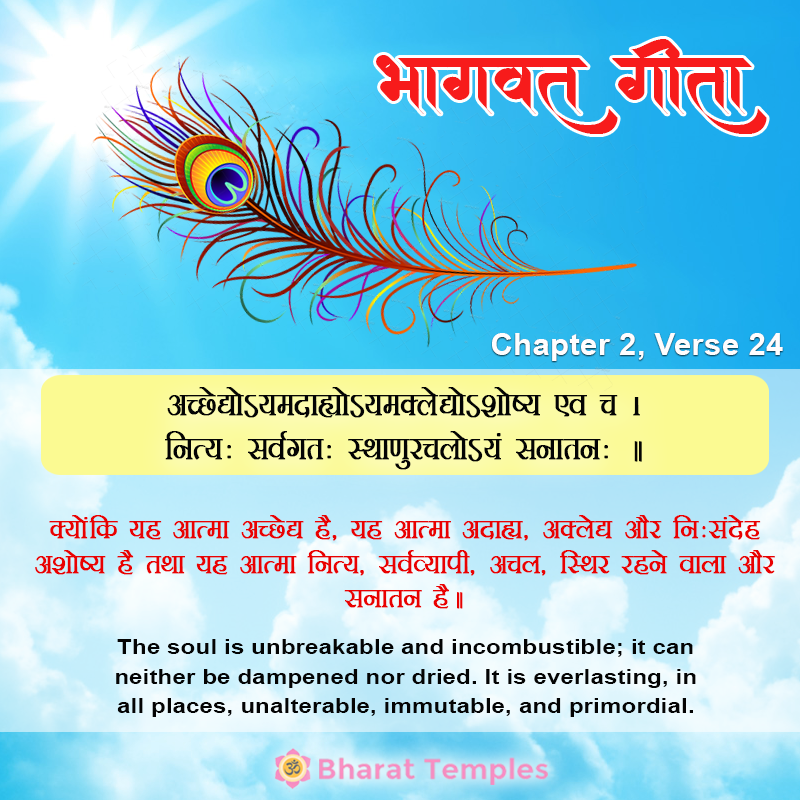अच्छेद्योऽयमदाह्योऽयमक्लेद्योऽशोष्य एव च |
नित्य: सर्वगत: स्थाणुरचलोऽयं सनातन: || 24||
achchhedyo ’yam adāhyo ’yam akledyo ’śhoṣhya eva cha
nityaḥ sarva-gataḥ sthāṇur achalo ’yaṁ sanātanaḥ
भावार्थ:
: क्योंकि यह आत्मा अच्छेद्य है, यह आत्मा अदाह्य, अक्लेद्य और निःसंदेह अशोष्य है तथा यह आत्मा नित्य, सर्वव्यापी, अचल, स्थिर रहने वाला और सनातन है॥24॥
Translation
The soul is unbreakable and incombustible; it can neither be dampened nor dried. It is everlasting, in all places, unalterable, immutable, and primordial.
English Translation Of Sri Shankaracharya’s Sanskrit Commentary By Swami Gambirananda
2.24 Since this is so, therefore ayam, It; acchedyah, cannot be cut. Since the other elements which are the causes of destruction of one ano ther are not capable of destroying this Self, therefore It is nityah, eternal. Being eternal, It is sarva-gatah, omnipresent. Being omnipresent, It is sthanuh, stationary, i.e. fixed like a stump. Being fixed, ayam, this Self; is acalah, unmoving. Therefore It is sanatanah, changeless, i.e. It is not produced from any cause, as a new thing.
It is not to be argued that ‘these verses are repetive since eternality and changelessness of the Self have been stated in a single verse itself, “Never is this One born, and never does It die,” etc. (20). Whatever has been said there (in verse 19) about the Self does not go beyond the meaning of this verse. Something is repeated with those very words, and something ideologically.’ Since the object, viz the Self, is inscrutable, therefore Lord Vasudeva raises the topic again and again, and explains that very object in other words so that, somehow, the unmanifest Self may come within the comprehension of the intellect of the transmigrating persons and bring about a cessation of their cycles of births and deaths.

